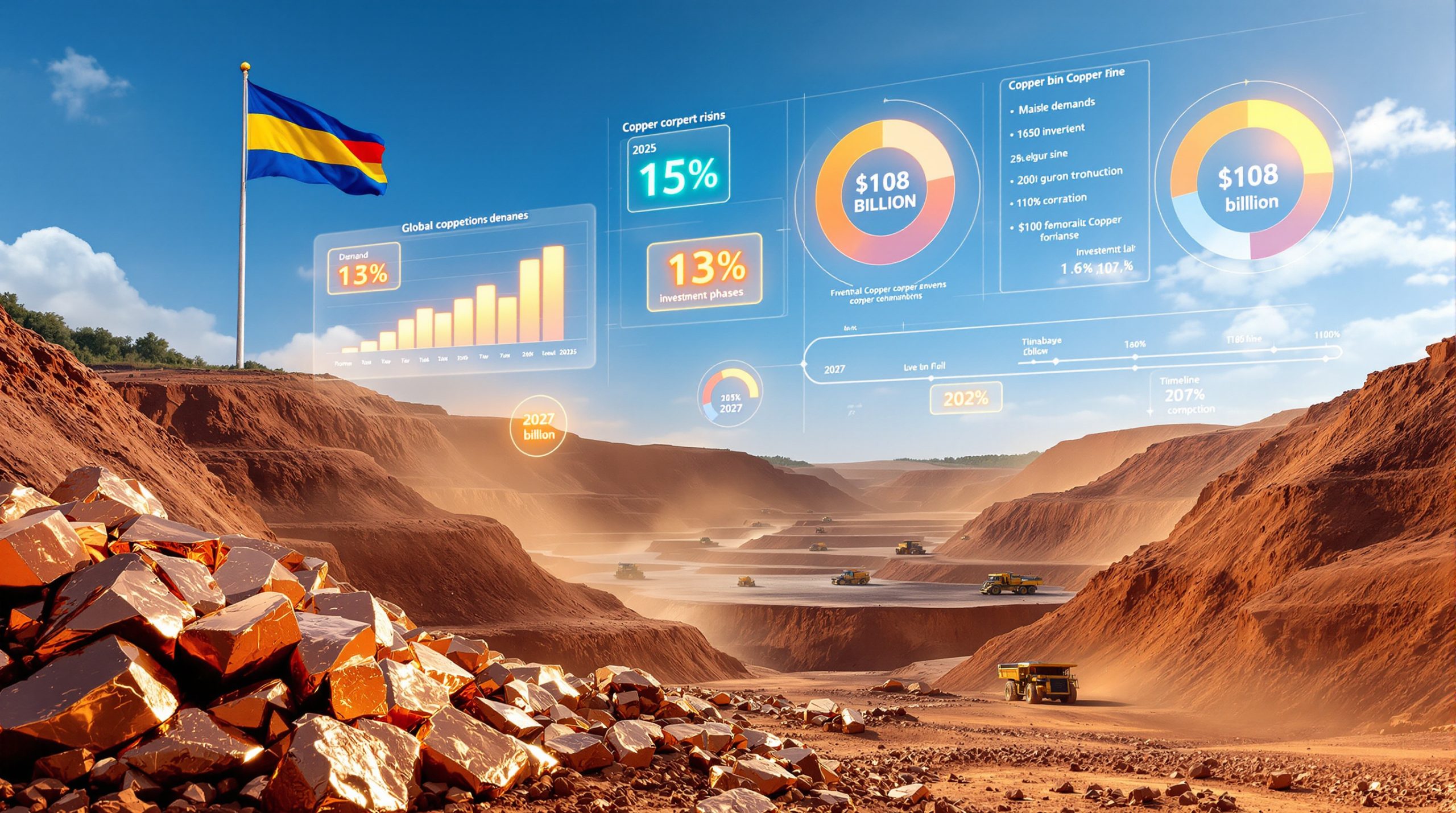Understanding the Intersection of Equipment Miniaturization and Sustainability Goals
The mining sector stands at a critical juncture where environmental responsibility intersects with technological advancement. Compact tools and ESG-driven innovation in mining represent more than mere equipment upgrades; they embody a fundamental shift toward sustainable resource extraction practices that balance profitability with planetary stewardship.
Modern mining operations face unprecedented pressure to demonstrate environmental responsibility while maintaining competitive advantages. Furthermore, this dual challenge has catalysed the development of sophisticated analytical systems that deliver precision results without the traditional environmental footprint associated with large-scale mining equipment.
The emergence of portable analytical instruments has revolutionised how mining companies approach resource evaluation and environmental monitoring. Consequently, these technologies enable real-time decision-making capabilities that were previously impossible with conventional laboratory-dependent workflows. Additionally, the adoption of mining innovation trends demonstrates how the industry is embracing technological advancement to meet sustainability goals.
How Compact Analytical Systems Transform Mining Decision-Making
Real-Time Data Collection for Sustainable Operations
Traditional mining operations relied heavily on sample collection and laboratory analysis cycles that could span several weeks, creating delays that often resulted in suboptimal resource utilisation and increased environmental impact. In contrast, contemporary portable analytical systems have compressed these timeframes to mere hours, enabling mining teams to make informed decisions while maintaining operational momentum.
The transformation extends beyond speed improvements. Moreover, real-time analytical capabilities allow for:
- Immediate ore grade verification reducing unnecessary extraction activities
- Dynamic waste rock classification minimising processing of low-value materials
- Continuous quality monitoring throughout the extraction process
- Instantaneous environmental parameter tracking ensuring regulatory compliance
Advanced XRD and XRF Technology Integration
Next-generation portable X-ray diffraction and fluorescence systems have achieved laboratory-grade precision while maintaining field-deployable form factors. These instruments provide comprehensive mineral identification and elemental analysis capabilities directly at extraction sites, eliminating the logistical complexities and environmental costs associated with sample transportation.
The technological advancement encompasses several critical capabilities:
| Technology | Analysis Speed | Precision Level | Environmental Benefit |
|---|---|---|---|
| Portable XRD | 15-30 minutes | ±2% accuracy | 70% reduction in sample transport |
| Field XRF | 60-180 seconds | ±0.1% precision | Real-time grade control |
| Integrated Systems | 5-10 minutes | Laboratory equivalent | Minimal site disturbance |
These systems enable enhanced resource recovery optimisation through precise targeting of high-value deposits while avoiding low-grade materials that would previously require energy-intensive processing. Furthermore, data-driven operations are becoming essential for maximising the efficiency of these compact analytical tools.
Why Mining Companies Prioritise Equipment Miniaturisation
Environmental Impact Reduction Through Smaller Footprints
Equipment miniaturisation fundamentally alters the environmental calculus of mining operations. Compact analytical tools require 60-80% less infrastructure compared to traditional systems, directly translating to reduced site preparation requirements and minimised ecosystem disruption.
The environmental benefits extend across multiple operational dimensions:
- Reduced energy consumption through optimised power management systems
- Minimised transportation requirements for equipment and personnel
- Decreased water usage in analytical processes
- Lower carbon emissions from reduced diesel generator dependency
Enhanced Operational Flexibility in Challenging Terrains
Miniaturised analytical equipment enables mining operations to access previously uneconomical deposits while maintaining environmental compliance standards. This capability proves particularly valuable in environmentally sensitive areas where traditional heavy equipment would cause unacceptable ecological damage.
The operational advantages include:
- Underground confined space accessibility without major infrastructure modifications
- Remote location deployment with minimal logistical support requirements
- Rapid site mobilisation reducing project development timelines by 30-40%
- Flexible deployment strategies adapting to changing geological conditions
In addition, implementing sustainability transformation practices becomes more feasible with compact equipment that minimises environmental impact.
The Role of Automation in ESG-Driven Mining Innovation
Reducing Human Exposure to Hazardous Conditions
Automated compact analytical systems significantly enhance worker safety protocols by enabling remote operation capabilities that maintain personnel at safe distances from potentially dangerous mining environments. Consequently, this technological evolution addresses both regulatory compliance requirements and corporate social responsibility objectives.
Modern automated systems feature:
- Remote monitoring interfaces allowing operation from secure locations
- Predictive safety algorithms identifying potential hazards before human exposure
- Emergency response protocols automatically triggered by environmental changes
- Comprehensive data logging supporting incident investigation and prevention
Data Quality Enhancement Through Automated Analysis
Automated analytical systems eliminate human error variables while providing consistent, repeatable results that support robust regulatory compliance documentation. This reliability proves essential for maintaining social licence to operate and meeting increasingly stringent environmental reporting requirements.
"Automated systems demonstrate the capability to process 300% more samples per day compared to manual analysis methods while maintaining superior accuracy standards across all analytical parameters."
The data quality improvements encompass:
- Statistical process control ensuring analytical consistency
- Automated quality assurance protocols detecting analytical anomalies
- Comprehensive audit trails supporting regulatory inspections
- Real-time reporting capabilities enabling immediate corrective actions
Additionally, AI mining efficiency demonstrates how artificial intelligence enhances automated analysis capabilities in modern mining operations.
How Portable Instruments Support Supply Chain Transparency
Blockchain Integration for Mineral Traceability
Advanced compact analytical tools increasingly incorporate blockchain integration capabilities that create immutable records of mineral origins and processing history. Therefore, this technological convergence directly addresses growing consumer and regulatory demands for ethical sourcing verification throughout global supply chains.
The traceability benefits include:
- Cryptographic verification of analytical results and timestamps
- Immutable chain of custody documentation from extraction to refinement
- Automated compliance reporting reducing administrative overhead
- Consumer transparency portals enabling end-user verification of ethical sourcing
Real-Time Environmental Monitoring Capabilities
Portable environmental monitoring systems now track comprehensive environmental metrics with continuous data collection capabilities that support both regulatory compliance and voluntary sustainability initiatives. These systems provide mining operations with unprecedented visibility into their environmental impact profiles.
| Environmental Parameter | Monitoring Frequency | Regulatory Impact | Technology Used |
|---|---|---|---|
| Air Quality Index | Continuous | Critical | Multi-gas sensors |
| Water Chemistry | Hourly | High | Ion-selective electrodes |
| Soil Contamination | Daily | Moderate | Portable XRF analysis |
| Noise Levels | Real-time | Variable | Acoustic monitoring |
| Dust Particulates | Continuous | Critical | Laser scattering |
Cost Benefits of Compact Tool Implementation
Reduced Infrastructure Requirements
Compact analytical equipment eliminates traditional infrastructure dependencies, resulting in significant capital expenditure reductions across multiple operational categories. Mining companies report infrastructure cost savings of 40-60% when implementing comprehensive compact tool programmes.
The cost reduction categories include:
- Laboratory facility construction eliminated through field-deployable analysis
- Transportation infrastructure reduced through on-site capabilities
- Maintenance facility requirements minimised through simplified equipment designs
- Utility infrastructure reduced through energy-efficient system designs
Energy Efficiency Improvements
Modern compact analytical tools consume significantly less energy than traditional mining equipment while delivering equivalent or superior analytical performance. Energy efficiency improvements of 40-60% are commonly achieved through innovative design approaches, particularly when implementing ESG standards and frameworks.
The efficiency improvements result from:
- Electric drive systems eliminating hydraulic power requirements
- Optimised analytical algorithms reducing processing time and energy consumption
- Smart power management systems automatically adjusting power consumption based on operational requirements
- Regenerative capabilities recovering energy from analytical processes
Addressing Community Relations Challenges
Minimising Visual and Acoustic Impact
Compact equipment operates with substantially reduced noise levels and smaller visual footprints, directly addressing community concerns about mining operations' impact on local quality of life. These considerations prove essential for maintaining social licence to operate in increasingly sensitive regulatory environments.
The community benefits encompass:
- Noise reduction of 20-30 decibels compared to traditional equipment
- Visual impact minimisation through compact equipment profiles
- Reduced traffic disruption from decreased transportation requirements
- Lower dust generation through enclosed analytical systems
Enhanced Environmental Restoration Capabilities
Compact equipment enables more precise environmental restoration work following mining operations, allowing companies to demonstrate tangible environmental stewardship while building community trust through visible restoration efforts. Subsequently, mine reclamation innovation showcases how compact tools enhance restoration capabilities.
The restoration advantages include:
- Precision habitat restoration without additional ecosystem disturbance
- Progressive rehabilitation programmes implemented during active operations
- Soil chemistry monitoring ensuring restoration effectiveness
- Vegetation success tracking through portable analytical monitoring
Future Developments in Compact Mining Technology
AI-Powered Predictive Analytics Integration
Next-generation compact analytical tools will incorporate artificial intelligence capabilities that transform raw analytical data into actionable operational intelligence. These systems will enable predictive decision-making across multiple operational parameters, as discussed in compact tools and ESG-driven innovation.
The AI integration will encompass:
- Predictive equipment maintenance reducing unplanned downtime by 40-50%
- Ore body optimisation modelling maximising resource recovery efficiency
- Environmental impact forecasting enabling proactive mitigation strategies
- Automated compliance reporting streamlining regulatory documentation
Enhanced Connectivity and Data Integration
Future compact analytical systems will feature comprehensive connectivity options enabling seamless integration with broader mining operation management systems and external stakeholder platforms.
"Industry analysis indicates that 85% of new mining equipment deployed by 2027 will feature integrated IoT connectivity for real-time data transmission and comprehensive analytical capabilities."
The connectivity enhancements will include:
- 5G network integration enabling real-time data transmission from remote locations
- Cloud-based analytical processing leveraging distributed computing resources
- Remote expert consultation connecting field operations with specialised technical support
- Integrated supply chain management coordinating analytical results with logistics systems
Strategic Implementation Considerations
Technology Adoption Frameworks
Mining companies implementing compact analytical tools require comprehensive technology adoption strategies that address both technical integration challenges and organisational change management requirements. Successful implementation typically follows structured adoption frameworks.
The implementation considerations include:
- Staff training programmes ensuring optimal technology utilisation
- Data management protocols integrating analytical results with existing systems
- Quality assurance procedures maintaining analytical reliability standards
- Regulatory compliance verification ensuring new technologies meet all applicable standards
Return on Investment Metrics
Comprehensive cost-benefit analysis of compact tool implementation demonstrates measurable returns across multiple operational and financial metrics. Mining companies typically achieve full return on investment within 18-24 months of implementation.
The ROI components include:
| Benefit Category | Typical Savings | Timeframe | Measurement Method |
|---|---|---|---|
| Laboratory Costs | 50-70% reduction | Immediate | Direct cost comparison |
| Transportation | 60-80% reduction | Immediate | Logistics cost tracking |
| Energy Consumption | 40-60% reduction | 3-6 months | Utility bill analysis |
| Environmental Compliance | 30-50% cost reduction | 6-12 months | Regulatory cost tracking |
Risk Management Through Technology Integration
Operational Risk Mitigation
Compact analytical tools provide comprehensive risk mitigation capabilities through real-time monitoring and analysis systems that identify potential operational hazards before they develop into significant safety or environmental incidents.
The risk mitigation benefits encompass:
- Early warning systems detecting equipment malfunctions and environmental changes
- Predictive maintenance protocols preventing equipment failures
- Environmental monitoring integration ensuring continuous compliance verification
- Emergency response coordination enabling rapid incident response
Regulatory Compliance Assurance
Modern compact analytical systems incorporate automated compliance verification capabilities that ensure continuous adherence to environmental and safety regulations while providing comprehensive documentation for regulatory inspections.
The compliance assurance features include:
- Real-time regulatory parameter monitoring ensuring continuous compliance
- Automated violation detection triggering immediate corrective actions
- Comprehensive audit documentation supporting regulatory inspections
- Predictive compliance modelling anticipating future regulatory requirements
Industry Transformation Through Compact Innovation
The integration of compact tools and ESG-driven innovation in mining represents a fundamental transformation in how the industry approaches resource extraction, environmental stewardship, and stakeholder engagement. This technological evolution demonstrates that environmental responsibility and operational efficiency function as complementary objectives rather than competing priorities.
Mining companies adopting comprehensive compact analytical tool programmes position themselves advantageously for future regulatory requirements while achieving immediate operational benefits including cost reduction, efficiency improvements, and enhanced environmental performance. The convergence of miniaturisation, automation, and sustainability requirements creates unprecedented opportunities for mining operations to demonstrate leadership in responsible resource development.
The strategic implementation of compact analytical technologies enables mining companies to meet growing stakeholder expectations for environmental responsibility while maintaining competitive operational performance. This technological evolution supports the industry's transition toward sustainable practices that balance economic objectives with environmental stewardship and social responsibility.
Disclaimer: This article contains forward-looking statements and industry projections based on current technological trends and market analysis. Actual results may vary depending on regulatory changes, technological developments, and market conditions. Mining companies should conduct comprehensive feasibility studies before implementing new analytical technologies and consult with qualified technical specialists to ensure optimal technology selection and implementation strategies.
Ready to Capitalise on Mining Innovation Leaders?
Discovery Alert's proprietary Discovery IQ model delivers instant alerts on significant ASX mineral discoveries, including breakthrough companies pioneering compact analytical technologies and ESG-driven innovations. Stay ahead of the market by identifying actionable investment opportunities in mining technology leaders before they achieve widespread recognition—begin your 30-day free trial today.




